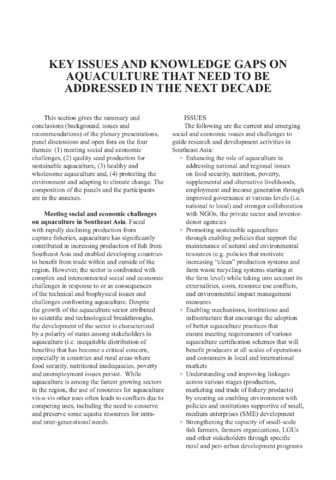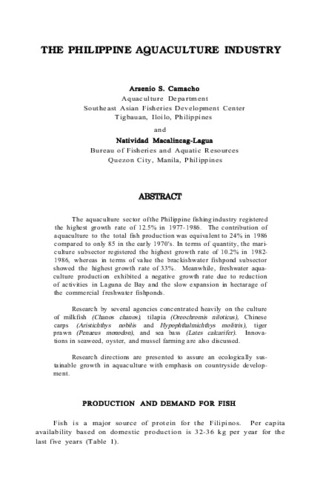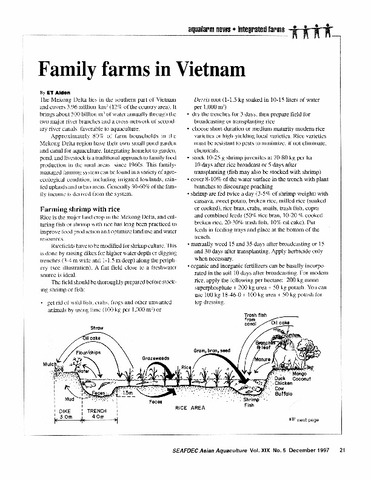Key issues and knowledge gaps on aquaculture that need to be addressed in the next decade
- Global styles
- MLA
- Vancouver
- Elsevier - Harvard
- APA
- Help
Share
抄録
This section gives the summary and conclusions (background, issues and recommendations) of the plenary presentations, panel discussions and open fora on the four themes: (1) meeting social and economic challenges, (2) quality seed production for sustainable aquaculture, (3) healthy and wholesome aquaculture and, (4) protecting the environment and adapting to climate change.
Suggested Citation
Acosta, B. O., Coloso, R. M., de Jesus-Ayson, E. G. T., & Toledo, J. D. (Eds.). (2011). Key issues and knowledge gaps on aquaculture that need to be addressed in the next decade. In Sustainable aquaculture development for food security in Southeast Asia towards 2020. Proceedings of the Regional Technical Consultation on Sustainable Aquaculture Development in Southeast Asia Towards 2020 (pp. 53–60). Tigbauan, Iloilo, Philippines: Aquaculture Department, Southeast Asian Fisheries Development Center.
Type
Conference paperISBN
9789718511992
Related items
Showing items related by title, author, creator and subject.
-
The Philippine aquaculture industry
Camacho, Arsenio S.; Macalincag-Lagua, Natividad (Aquaculture Department, Southeast Asian Fisheries Development Center, 1988)The aquaculture sector of the Philippine fishing industry registered the highest growth rate of 12.5% in 1977-1986. The contribution of aquaculture to the total fish production was equivalent to 24% in 1986 compared to ... -
Family farms in Vietnam
Aldon, Eva T. (Aquaculture Department, Southeast Asian Fisheries Development Center, 1997) -
Nursery and grow-out operation and management of Penaeus monodon (Fabricius)
Corre, Kaylin G. (Aquaculture Department, Southeast Asian Fisheries Development Center, 1988)The results of research on nursery and grow-out rearing of prawn conducted by the SEAFDEC Aquaculture Department for over a decade are reviewed. Different rearing facilities designed to accommodate hatchery-produced prawn ...






